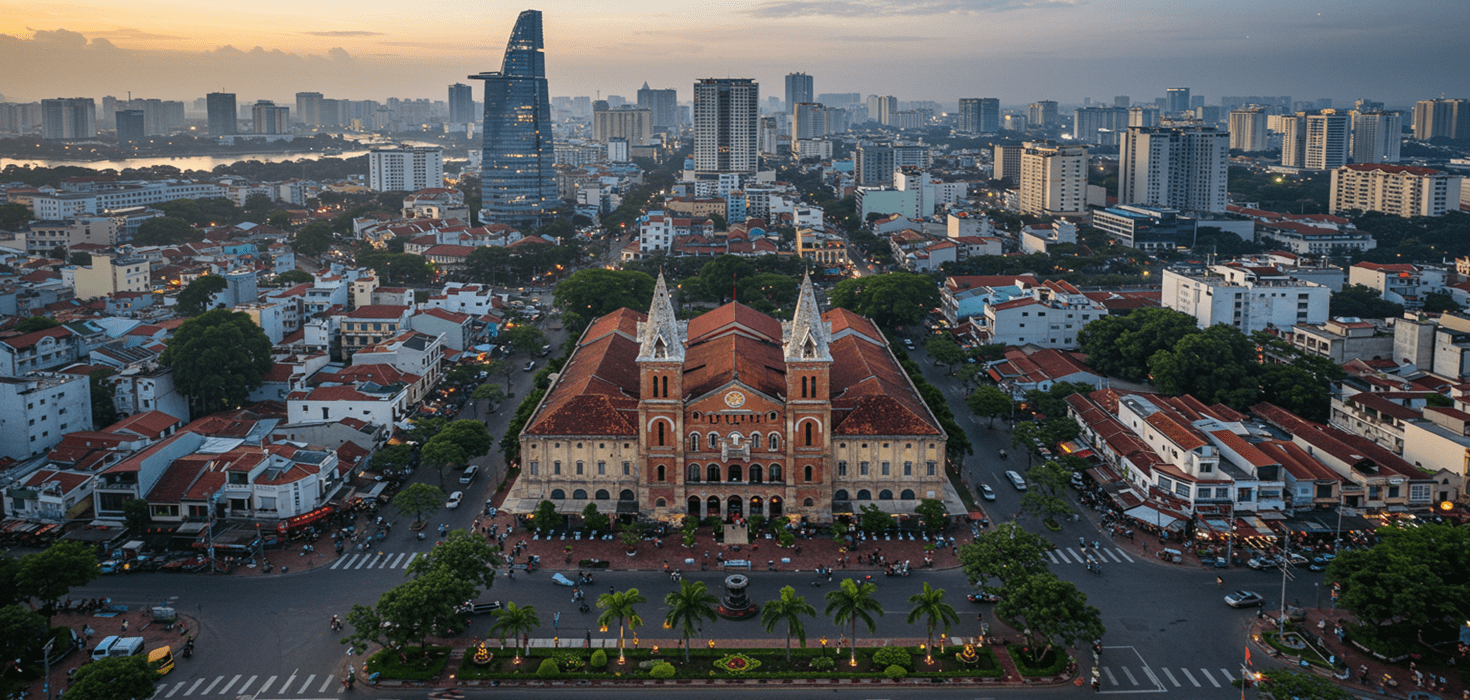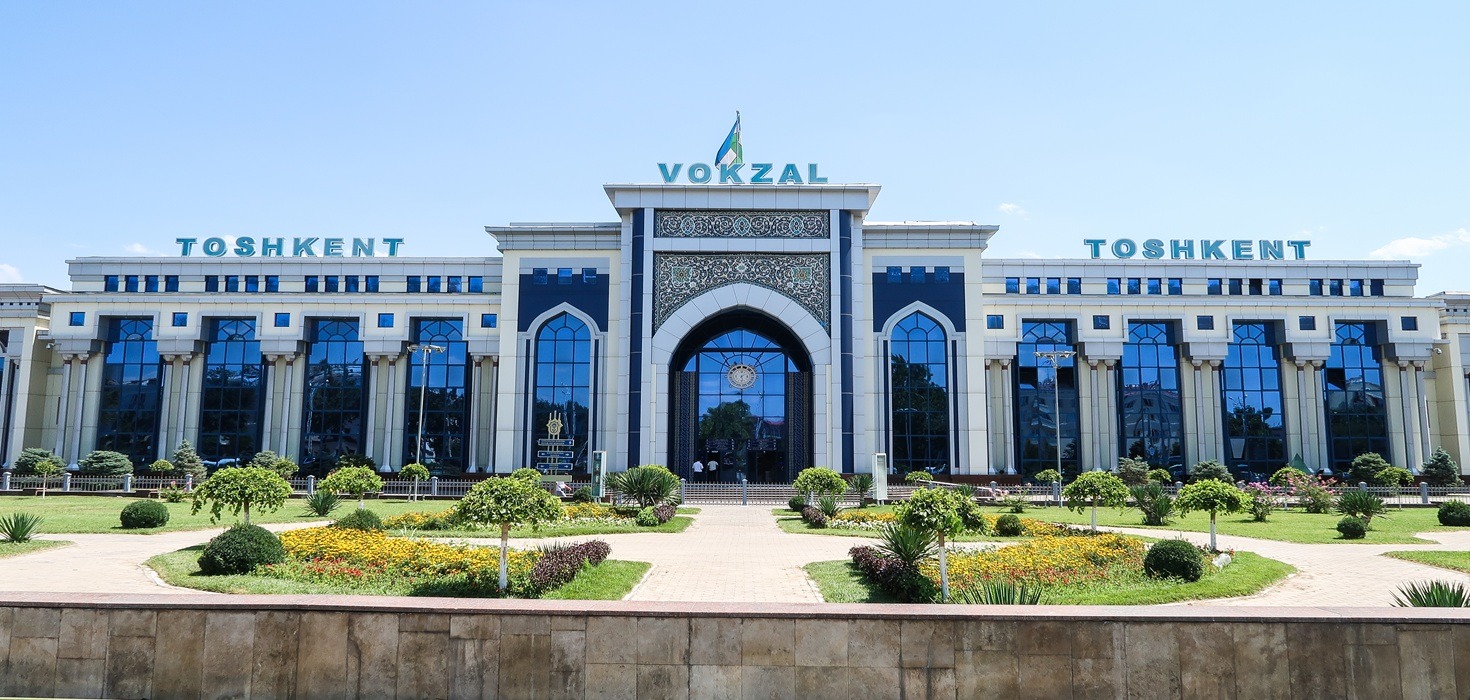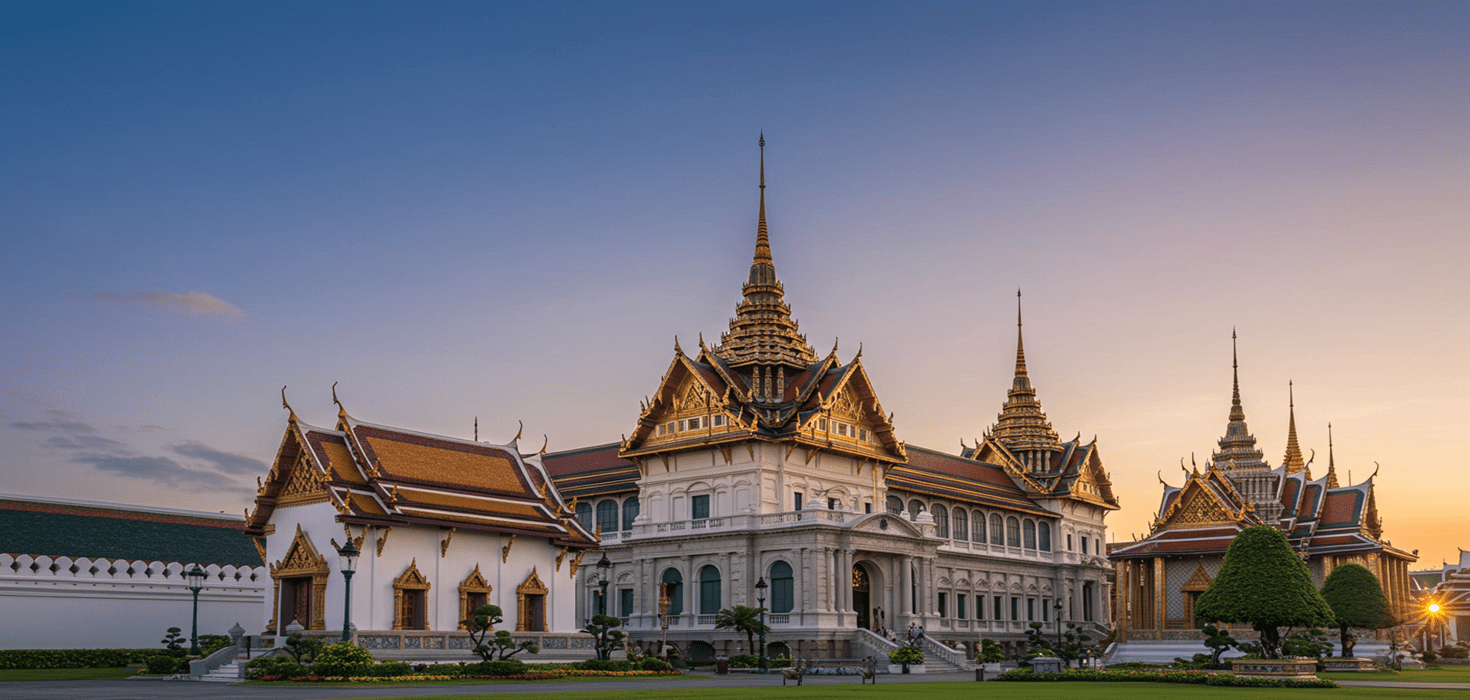Introduction
Welcome to Singapore, a dazzling city-state that’s not just a feast for the eyes but also a culinary paradise! With a rich tapestry of history woven from various cultures, Singapore’s food scene is a delightful reflection of its multicultural influences. From the aromatic spices of Indian cuisine to the delicate flavors of Chinese dishes, every bite tells a story of the island’s past and present.
Imagine embarking on a foodie adventure that takes you through the streets and hawker centers, where the origins of Singapore are served on a plate. This journey isn’t just about tasting food; it’s about exploring the historical and cultural layers that have shaped the culinary landscape of this vibrant nation. Let’s set the table for a delicious exploration of Singapore’s food history!
Tracing the Origins of Singapore: A Culinary Timeline
Singapore’s culinary journey is as rich and diverse as its people. From its humble beginnings as a fishing village to becoming a global gastronomic hub, the evolution of Singapore’s food scene mirrors the nation’s history. Let’s take a stroll down memory lane and uncover the delicious timeline of Singapore’s culinary heritage.
The Early Days: From Fishing Village to Colonial Outpost
Picture Singapore in the 14th century: a small fishing village known as Temasek, where the sea was a source of sustenance. Fast forward to the 19th century, when Sir Stamford Raffles arrived, transforming this sleepy settlement into a bustling colonial outpost. The influx of traders and immigrants brought with it a plethora of flavors and cooking styles. Seafood became a staple, and local dishes began to emerge, influenced by Malay, Chinese, and Indian culinary traditions.
One of the earliest dishes that captured the essence of this period was the humble nasi lemak, a fragrant rice dish cooked in coconut milk, often served with sambal, fried anchovies, and peanuts. It’s a dish that still resonates with locals today, a delicious reminder of Singapore’s roots.
The Melting Pot: Cultural Influences Shaping Singaporean Cuisine
As Singapore grew, so did its culinary scene. The arrival of Chinese immigrants in the 19th century introduced dishes like Hainanese chicken rice and char kway teow, while Indian migrants brought flavorful curries and roti prata. The fusion of these cultures created a unique gastronomic identity that is distinctly Singaporean.
Anecdotes abound about hawker center favorites. For instance, did you know that the famous laksa—a spicy noodle dish—has roots in both Chinese and Malay cuisines? This delightful dish is a testament to the harmonious blend of cultures, showcasing how different communities have contributed to Singapore’s food narrative.
Modern Day: A Fusion of Tradition and Innovation
Today, Singapore’s culinary landscape is a vibrant mix of tradition and modernity. Trendy cafes and high-end restaurants sit alongside traditional hawker stalls, each offering a unique take on local flavors. Chefs are not just preserving age-old recipes; they’re reinventing them, infusing global influences into beloved dishes.
For example, you might find a contemporary twist on chili crab at a chic restaurant, where chefs play with textures and presentation while staying true to the dish’s essence. This spirit of innovation keeps Singapore’s food scene dynamic and exciting, inviting both locals and tourists to explore new flavors while honoring the past.
Singapore’s Culinary Heritage: A Feast for the Senses
As we continue this delicious journey, let’s dive deeper into the heart of Singaporean cuisine. The dishes here are not just meals; they are stories, traditions, and a celebration of the island’s rich heritage. Each dish has its own significance, and together they form a culinary tapestry that is both diverse and delicious.
Must-Try Traditional Dishes: Hainanese Chicken Rice, Laksa, and More
No exploration of Singapore’s food culture is complete without indulging in its traditional dishes. Hainanese chicken rice is often hailed as the national dish, featuring succulent poached chicken served with fragrant rice and a side of zesty chili sauce. This dish is a must-try, embodying the simplicity and elegance of Singaporean flavors.
Then there’s laksa, a spicy noodle soup that warms the soul. With its rich coconut milk base and a medley of toppings, it’s a dish that tantalizes the taste buds. And let’s not forget the iconic chili crab, a messy yet delightful experience that showcases the bold flavors of Singaporean cuisine.
The Role of Hawker Centers in Singapore’s Food Culture
Hawker centers are the beating heart of Singapore’s food culture. These vibrant food courts are where locals gather to enjoy affordable, delicious meals. Each stall tells a story—whether it’s a family recipe passed down through generations or a modern twist on a classic dish, you’ll find a treasure trove of flavors waiting to be discovered.
Strolling through a hawker center, the aromas of grilled satay, fried noodles, and sweet desserts waft through the air, creating an irresistible invitation to sample everything. It’s not just about eating; it’s about the communal experience, where friends and families come together to share meals and stories.
Street Food: A Taste of Local Delicacies
Street food in Singapore is an adventure in itself. From the bustling streets of Chinatown to the vibrant stalls of Little India, every corner offers a unique culinary delight. Try the crispy roti prata served with a side of curry, or indulge in char kway teow, a stir-fried noodle dish that’s a local favorite.
Each bite is a glimpse into the local lifestyle, and it’s easy to see why street food is celebrated as an integral part of Singapore’s identity. Whether you’re grabbing a quick snack or enjoying a leisurely meal, the flavors of Singapore will leave you craving more.
Multicultural Influences: The Flavors of Singapore
Singapore’s food scene is a delicious mosaic made up of various ethnic influences, each contributing to the unique flavors that define this culinary haven. The interplay of Chinese, Malay, Indian, and Peranakan cuisines creates a vibrant tapestry of tastes that reflects the harmonious coexistence of these cultures. Let’s take a closer look at how each group has added their own flair to Singaporean cuisine, making it a true melting pot of flavors.
Chinese, Malay, Indian, and Peranakan Contributions
The Chinese community has had a significant impact on Singapore’s culinary landscape. From the rich, savory flavors of dim sum to the spicy punch of chili crab, Chinese dishes are staples in the local diet. The various dialect groups, such as Hokkien, Cantonese, and Teochew, have brought their unique recipes and cooking techniques, enriching the food culture.
Malay cuisine, with its emphasis on spices and aromatic herbs, has also left a mark. Dishes like rendang and nasi lemak showcase the use of coconut milk, lemongrass, and chili, creating flavors that are both comforting and complex. The Malay influence is evident in hawker centers, where you can find a variety of traditional dishes that are beloved by locals.
Indian cuisine adds a vibrant and spicy dimension to Singapore’s food scene. From the fragrant biryanis to the crispy dosas, Indian food is celebrated for its bold flavors. The Indian community has introduced an array of dishes that have become part of the local diet, such as murtabak and roti prata, which are enjoyed by people of all backgrounds.
Don’t forget about the Peranakan culture, a beautiful blend of Chinese and Malay heritage. The Peranakan community has gifted Singapore with delightful dishes like laksa and nasi ulam, which are rich in spices and often accompanied by colorful side dishes. The unique flavors and intricate cooking methods of Peranakan cuisine are a testament to the cultural exchange that has shaped Singapore’s culinary identity.
The Evolution of Fusion Food in Singapore
Fusion food is where the magic truly happens in Singapore. Chefs are taking traditional recipes and giving them a modern twist, resulting in exciting new dishes that surprise and delight. For instance, you might encounter chili crab pasta or laksa pesto at trendy eateries, where culinary creativity knows no bounds. This innovative approach not only keeps the food scene fresh but also celebrates the multicultural roots of Singapore.
Food festivals play a significant role in showcasing this fusion culture. Events like the Singapore Food Festival bring together local chefs and food enthusiasts to experiment with flavors and create new culinary experiences. It’s a great time to sample unique dishes that blend different cultural influences, reflecting the dynamic nature of Singapore’s food heritage.
Celebrating Multicultural Singapore through Food Festivals
Food festivals are a fantastic way to immerse yourself in Singapore’s culinary diversity. The Singapore Food Festival is an annual highlight, celebrating local flavors with a mix of traditional and contemporary dishes. You’ll find pop-up stalls featuring everything from satay to durian desserts, making it a feast for the senses.
Another must-visit event is the Hawker Food Festival, which pays homage to the beloved hawker culture. Here, you can sample signature dishes from renowned hawkers while enjoying live cooking demonstrations and interactive workshops. It’s a celebration of the culinary traditions that have shaped Singapore, and a chance to meet the talented chefs behind your favorite dishes.
These festivals not only highlight the rich tapestry of flavors but also foster a sense of community, bringing together people from all walks of life to share in the joy of food. Whether you’re a local or a visitor, these events are a perfect opportunity to indulge in the diverse food culture that Singapore has to offer.
Culinary Deep Dive: Signature Dishes and Their Stories
Now that we’ve explored the multicultural influences on Singapore’s food, let’s take a deeper look at some signature dishes that tell the story of this vibrant city. Each dish has its own unique history and preparation method, making them not just meals, but a celebration of culture.
The Art of Making Chili Crab: A Local Favorite
Chili crab is often regarded as a national treasure. This dish features succulent crab cooked in a rich, spicy tomato-based sauce that’s both sweet and savory. The origins of chili crab date back to the 1950s when a local chef experimented with a recipe that combined traditional Chinese stir-frying techniques with local flavors. Today, it’s a must-try for anyone visiting Singapore.
Eating chili crab is an experience in itself. The dish is served with mantou (fried buns) that are perfect for soaking up the luscious sauce. Don’t be shy—get your hands messy and enjoy every bite! Many restaurants offer their own twists on this classic, so be sure to try a few different versions during your visit.
Laksa: A Spicy Noodle Dish with a Rich Heritage
Next up is laksa, a dish that beautifully illustrates the fusion of cultures in Singapore. This spicy noodle soup comes in two main varieties: curry laksa, which features a coconut milk base, and asam laksa, known for its sour fish broth. Both versions are packed with flavor and topped with an array of ingredients, including prawns, tofu, and bean sprouts.
Laksa’s roots can be traced back to the Peranakan culture, where Chinese and Malay culinary traditions intertwine. Each bowl of laksa tells a story of heritage and innovation, making it a beloved comfort food for many Singaporeans. Don’t forget to slurp your noodles for the full experience!
The Sweet Side: Traditional Snacks and Desserts
Singapore’s culinary journey wouldn’t be complete without indulging in its sweet treats. Traditional snacks like kueh (bite-sized cakes) and ondeh-ondeh (glutinous rice balls filled with palm sugar) are perfect examples of the country’s dessert culture. These colorful delights often feature coconut, pandan, and other local ingredients, showcasing the creativity of Singaporean bakers.
For a truly unique experience, try chendol, a refreshing dessert made with shaved ice, coconut milk, and green rice flour jelly, topped with sweetened red beans and palm sugar syrup. It’s the perfect way to cool down on a hot day while treating yourself to a taste of local sweetness!
Festivals and Events: Celebrating Singapore’s Food Culture
Singapore is a city that loves to celebrate, and food is at the heart of many of its festivals. These events not only highlight the culinary diversity of the nation but also foster a sense of community and cultural pride. Let’s explore some of the most exciting food festivals that you won’t want to miss!
Singapore Food Festival: History and Highlights
The Singapore Food Festival is a culinary extravaganza that takes place every July, attracting food lovers from all over the world. This festival showcases the best of Singaporean cuisine, featuring a mix of traditional dishes and innovative creations from local chefs. You can expect to find pop-up stalls, cooking demonstrations, and even food workshops where you can learn to make your favorite dishes.
One of the highlights of the festival is the MasterChef Singapore competition, where aspiring chefs showcase their skills in front of a panel of judges. It’s a fantastic opportunity to witness culinary talent in action and discover new flavors that you might not have tried before.
Hawker Food Festival: A Celebration of Local Flavors
The Hawker Food Festival is another must-attend event that celebrates the beloved hawker culture of Singapore. Held annually, this festival brings together some of the best hawker stalls from around the island, offering a chance to sample a variety of local dishes all in one place. From char kway teow to satay, you’ll find all your favorites in one vibrant location.
This festival not only highlights the delicious food but also honors the hawkers who have dedicated their lives to perfecting their craft. It’s a wonderful way to support local businesses while enjoying the rich flavors of Singapore.
Other Notable Food Events Throughout the Year
Throughout the year, Singapore hosts various food events that cater to different tastes. From the Singapore Night Festival to the Rasa Fest, there’s always something happening that revolves around food and culture. These events often feature live performances, workshops, and plenty of opportunities to sample local delicacies.
Keep an eye on the local calendar to ensure you don’t miss out on these exciting culinary celebrations. They’re a fantastic way to immerse yourself in the local culture and connect with fellow food enthusiasts.
Detailed Day-by-Day Itinerary: A Food Lover’s Guide
If you’re ready to dive into Singapore’s culinary scene, here’s a day-by-day itinerary that will guide you through the best food experiences this city has to offer. Grab your appetite and let’s get started!
Day 1: Exploring Chinatown and Sampling Traditional Dishes
Start your foodie adventure in Chinatown, where the streets are lined with hawker stalls and restaurants serving up delicious traditional dishes. Begin with a hearty breakfast of dim sum at a local eatery, followed by a visit to the iconic Buddha Tooth Relic Temple.
For lunch, head to the Chinatown Complex Food Centre, where you can sample Hainanese chicken rice and char kway teow. Don’t forget to save room for dessert—try some kueh or chendol from one of the dessert stalls!
Day 2: Hawker Center Hopping and Food Tours
Your second day is all about exploring the famous hawker centers. Start your day at Maxwell Food Centre, where you can enjoy a delicious breakfast of roti prata and curry. Afterward, take a food tour to discover hidden gems and learn about the history of hawker food in Singapore.
For lunch, visit Lau Pa Sat, where you can indulge in satay and other local favorites. In the evening, join a night food tour to experience the vibrant street food scene, sampling dishes like laksa and chili crab under the stars.
Day 3: Food Markets and Local Delicacies
On your final day, explore the local food markets. Start with a visit to Tekka Centre in Little India, where you can find fresh produce, spices, and delicious Indian snacks. Grab a quick breakfast of dosai or murtabak before continuing your culinary journey.
For lunch, head to Tiong Bahru Market, where you can sample a variety of local dishes from different stalls. In the afternoon, take a leisurely stroll through the neighborhood and stop by local bakeries for some traditional snacks. Wrap up your trip with a visit to a rooftop bar for stunning views of the city while enjoying a refreshing drink.
Fun Facts About Singapore’s Food Culture
Did you know that Singapore is often referred to as the “food capital of the world”? With a diverse range of cuisines and flavors, it’s no wonder food lovers flock to this city-state. Here are some quirky facts that highlight the uniqueness of Singapore’s food culture:
- Hawker culture is recognized by UNESCO: In 2020, Singapore’s hawker culture was inscribed on UNESCO’s Representative List of the Intangible Cultural Heritage of Humanity, acknowledging its significance in the country’s identity.
- Chili crab is a global favorite: This local dish has gained international acclaim, with food critics praising its delicious flavors and unique preparation.
- Food courts are a way of life: With over 100 hawker centers across the island, Singaporeans have access to affordable and delicious meals at any time of day.
Historical Context and Folklore: Stories Behind the Dishes
Every dish in Singapore has a story to tell, often steeped in history and folklore. For instance, the origins of laksa are often debated, with some claiming it came from the Chinese immigrants who settled in the region, while others believe it has Malay roots. Regardless of its origin, laksa has become a beloved dish that represents the fusion of cultures.
Another interesting tale surrounds Hainanese chicken rice. Legend has it that this dish was brought to Singapore by Hainanese immigrants who worked in the kitchens of wealthy Chinese families. Over time, it evolved into the dish we know today, becoming a symbol of Singaporean cuisine.
These stories not only add depth to the dishes but also connect diners to the rich history and cultural significance of the food they enjoy. Sharing these tales while dining makes for a delightful experience, enriching your understanding of Singapore’s culinary heritage.
Practical Information for Travelers: Tips and Insights
As you prepare for your culinary adventure in Singapore, here are some essential tips to enhance your experience:
Best Times to Visit Food Festivals
Food festivals in Singapore are typically held throughout the year, but the Singapore Food Festival in July is a highlight. Plan your visit around this time to enjoy a wide array of culinary delights and special events. Keep an eye on local calendars for other food-related events that may coincide with your trip!
Transportation Tips: Getting Around Singapore
Singapore boasts an efficient public transportation system, making it easy to hop from one food destination to another. The MRT (Mass Rapid Transit) is the quickest way to get around, with stations conveniently located near major hawker centers and restaurants. Consider getting an EZ-Link card for seamless travel on public transport.
Safety and Health Guidelines for Food Exploration
Singapore is known for its cleanliness and high food safety standards. While exploring hawker centers and street food stalls, look for the Hygiene Grading System displayed at each stall, which indicates the cleanliness of the establishment. It’s always a good idea to wash your hands before eating, and don’t hesitate to ask for recommendations from locals to find the best spots!
Sustainability and Conservation Focus: Food and Environment
In recent years, there has been a growing emphasis on sustainability within Singapore’s food scene. Many local chefs and restaurants are committed to sourcing ingredients responsibly and reducing food waste. Initiatives like the Singapore Food Agency’s “Eat Singapore” campaign promote local produce and sustainable practices.
When dining out, consider supporting eateries that prioritize sustainability, such as those that use organic ingredients or offer plant-based options. It’s a great way to enjoy delicious food while being mindful of the environment!
Outdoor Sports and Activities: Combining Food with Fun
Singapore is not just about food; it’s also a fantastic destination for outdoor activities! After indulging in a hearty meal, why not burn some calories by exploring the city’s parks and waterfronts? Take a leisurely stroll or rent a bike at East Coast Park, where you can enjoy the sea breeze and stunning views.
For the adventurous, consider joining a guided food and cycling tour that takes you through the city’s hidden gems. This way, you can experience the best of both worlds—savoring delicious food while staying active!
Shopping Guide: Souvenirs and Local Delicacies
No trip to Singapore is complete without picking up some food-related souvenirs. Head to local markets like Chinatown Street Market or Tekka Centre to find unique snacks and ingredients to take home. Look for items like spices, local sauces, and traditional snacks that capture the essence of Singapore’s culinary culture.
Don’t forget to check out specialty stores that offer kueh and other traditional treats, which make for great gifts or personal indulgences. These edible souvenirs are sure to remind you of your culinary adventure long after you’ve left the city!
Seasonal Travel Insights: Best Times for Food Lovers
Singapore’s food scene is vibrant year-round, but certain seasons offer unique culinary experiences. The Chinese New Year in January or February brings an array of festive dishes, while the Hari Raya Puasa celebrations in May showcase delicious Malay treats. If you visit during these times, be sure to indulge in seasonal specialties that reflect the rich cultural heritage of Singapore.
Additionally, the Durian season from June to August is a must for adventurous eaters. Known as the “king of fruits,” durian is a divisive delicacy that many locals adore. If you’re feeling brave, try it fresh from the market or in desserts!
Commonly Asked Questions (FAQs)
As you plan your culinary journey through Singapore, you might have some questions. Here are a few commonly asked questions to help you along the way:
What is the best time to visit Singapore for food?
The best time to visit Singapore for food is during the various food festivals held throughout the year, particularly the Singapore Food Festival in July. However, the city offers delicious food options year-round, so any time is a great time to explore!
Are hawker centers safe to eat at?
Absolutely! Hawker centers are known for their cleanliness and high food safety standards. Look for the Hygiene Grading System displayed at each stall to ensure you’re dining at a reputable place.
What are some must-try dishes in Singapore?
Some must-try dishes include Hainanese chicken rice, chili crab, laksa, and satay. Don’t forget to sample local desserts like kueh and chendol for a sweet finish!
Conclusion
Singapore’s culinary journey is a celebration of its rich heritage, diverse cultures, and innovative spirit. From the bustling hawker centers to the chic restaurants, every meal is a delightful experience waiting to be savored. Whether you’re a local or a visitor, the flavors of Singapore will leave you with unforgettable memories and a craving for more. So, pack your bags, bring your appetite, and get ready to explore the vibrant food culture of this incredible city!










